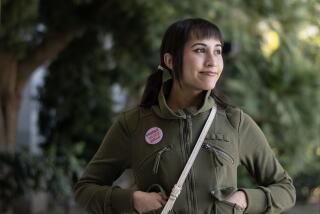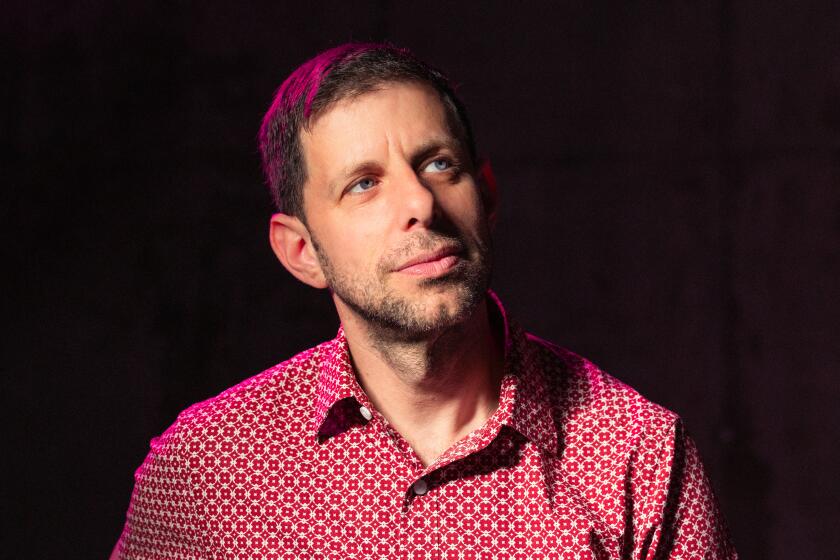Panel Says City Can’t Limit Style of Mosque : Design: Cultural commission says the rules might violate the Constitution. The Islamic Center welcomes the report but has no plans to add a traditional dome.
The Los Angeles Cultural Affairs Commission, commenting on a debate over the appearance of a proposed mosque in Granada Hills, advised Mayor Tom Bradley on Friday that it may be unconstitutional for the city to limit the architectural style of religious buildings.
Bradley had asked in September for a report from the commission, saying it was “outrageous” that the Islamic Center of Northridge, focal point of Muslim worship in the San Fernando Valley, was apparently being pressured into building a new, $1.8-million mosque in a Spanish colonial style, without the usual Islamic dome or minaret.
The report to Bradley, signed by the commission’s president, David H. Simon, warned that “attempts to limit the design aspects of religious buildings may violate the Constitution, if they prohibit freedom of expression.”
“The design of a religious building should be the domain of the institution which it serves,” the report said.
The report said neighborhood design requirements--such as the pressure for Spanish colonial styles in Granada Hills--should not apply to religious buildings, but “the diversity of the cultural landscape should be encouraged.” To avoid such conflicts between neighbors and churches, “religious buildings should be built only in areas designated in the community plan for institutional use,” it said.
Bradley’s office had complained that the Muslims were discouraged, if not exactly prohibited by the city, from proposing the traditional Islamic design for fear that it would be rejected by Los Angeles City Councilman Hal Bernson or the local community.
Opposition by the councilman and local homeowner groups could have delayed or prevented issuance of building permits.
Friday’s report was warmly welcomed by Salam Al-Marayati, director of the Muslim Public Affairs Council.
“If this rule or principle had been official city policy before, the Muslims in the Valley would not have had any doubts or confusion about their rights to build a mosque,” Al-Marayati said.
As it was, the Muslims felt they had to bow to local standards, Al-Marayati contended.
But Mohammed Mohiuddin, head of the Northridge Islamic center, said Friday that his congregation has no plans now to add a dome or minaret to the design of the mosque, which is to be built on a 2.5-acre site next to the Simi Valley Freeway near Encino Avenue.
“We’re not going to jeopardize the mosque to get a dome or minaret,” said Mohiuddin, a chemist. “Maybe later we will seek to build them, if our people feel that’s what they want,” but currently there is no strong demand among the congregation for them, he said.
Meanwhile, Bernson refused to say Friday what his reaction would be if the Muslims sought a design change.
“I’m just not going to comment,” he said. “But if they wanted a minaret they should have applied for it.”
The lawmaker, who is seeking reelection against at least six opponents this spring, also continued to maintain Friday--as he did several months ago--that it would require city approval of a modified conditional use permit before a minaret or dome could be added to the project.
According to John Perica, the city zoning official most deeply involved in the mosque issue, the City Council’s approval in September of a conditional use permit allowing construction of the mosque did not specifically bar a dome or minaret.
Perica has said the Muslims did not want a Spanish-style building, but made an “implicit promise to build it like that . . . because they felt they had to have a design acceptable to the council and the neighborhood.”
As it was, Granada Hills homeowners unsuccessfully opposed the mosque, anyway.
Bernson initially resisted plans for the mosque and asked the Muslims to build elsewhere.
The councilman later supported a permit to build the mosque and it was granted, but with a record 44 restrictions on the center’s operation.
These include a limit of 250 on the number of worshipers, half what the Muslims had sought.
More to Read
Sign up for Essential California
The most important California stories and recommendations in your inbox every morning.
You may occasionally receive promotional content from the Los Angeles Times.






